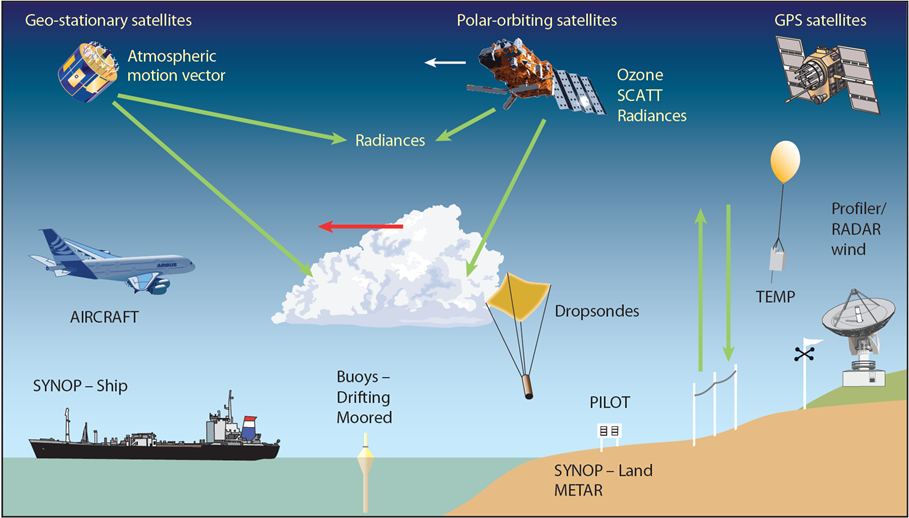ECMWF routinely processes data from around 90 satellite instruments as part of its operational daily data assimilation and monitoring activities. We receive 800 million observations daily, and 60 million quality-controlled observations are available daily for use in the Integrated Forecasting System (IFS); the vast majority of these are satellite measurements, but ECMWF also benefits from all available observations from non-satellite sources, including surface-based and aircraft reports.

Weather forecasts have always relied on accurate observations of the current weather. Modern numerical weather prediction is no different and makes extensive use of terrestrial and satellite observations. These observations provide atmospheric, ocean and land surface information.
We contribute to the future development of the global observing system both through assessing the potential impact of new data and by pioneering the use of new satellite data, including data from research satellites such as those in the A-train and ESA’s Earth Explorer missions. The variety and quality of satellite observations are still changing rapidly, though some types are now very well established. Satellite instruments are very complex, often making many thousands of individual observations simultaneously at the same location, and requiring sophisticated techniques to interpret the information they contain.
Improved techniques for handling terrestrial data are also being developed, such as allowing for the drift of radiosondes after launch.
Observations, in particular from satellites, combined with improved Earth system modelling and advances in data assimilation techniques, make a major contribution to improve medium-range weather forecast skill.
